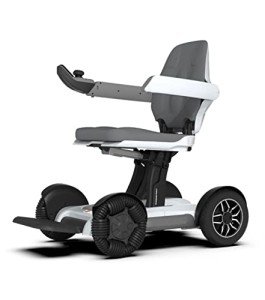Mobility Scooters Near Me: A Comprehensive Guide to Accessible Transportation
For people with mobility problems, especially older adults and those recuperating from injuries or surgeries, preserving self-reliance and mobility is vital. Mobility scooters have become an important option, offering a dependable and comfortable ways of transportation for those who discover walking challenging. However, finding the ideal mobility scooter and comprehending the choices readily available can be overwhelming. This guide intends to streamline the procedure of locating and selecting a mobility scooter near you, guaranteeing that users can with confidence navigate their everyday lives.
What is a Mobility Scooter?
A Mobility scooter Brands scooter is a motorized lorry created to assist individuals with restricted mobility. Normally, these scooters feature a comfortable seat, handlebars for steering, and a battery-powered motor that propels the vehicle. They are perfect for both indoor and outdoor usage, enabling users to travel longer distances without tiredness. Mobility scooters been available in a range of sizes and designs, each catering to various needs and environments.

Kinds Of Mobility Scooters
Before diving into the procedure of finding a mobility scooter near you, it's necessary to understand the various types available:
1. Three-Wheel Scooters
- Pros: More maneuverable, especially in tight spaces.
- Cons: Less steady on unequal surface.
2. Four-Wheel Scooters
- Pros: More steady, much better suited for outside use and uneven surface areas.
- Cons: Larger turning radius, might require more area.
3. Portable Scooters
- Pros: Lightweight and easy to dismantle for transport.
- Cons: May have restricted battery life and speed.
4. Durable Scooters
- Pros: Built to support much heavier users and carry more weight.
- Cons: Larger and less portable.
5. Standing Scooters
- Pros: Ideal for users who prefer standing or have actually limited seating choices.
- Cons: May not be as comfy for longer rides.
How to Find a Mobility Scooter Near You
1. Regional Retail Stores
- Pros: Ability to evaluate the scooter before purchasing, immediate schedule.
- Cons: Limited choice, higher rates.
- Tips: Visit stores like Walmart, Target, or local medical supply stores. Ask if they use test drives or have designs on display screen.
2. Online Shops
- Pros: Wide choice, competitive rates, in-depth item reviews.
- Cons: Can not test the scooter personally, potential shipping hold-ups.
- Tips: Websites like Amazon, Alibaba, and specialized mobility scooter merchants use detailed choices. Read evaluations and compare features before buying.
3. Rental Services
- Pros: Ideal for short-term needs, no long-term commitment.
- Cons: Costly gradually, limited schedule in some areas.
- Tips: Check with local medical devices rental business or online platforms like RentACenter. Ensure the rental contract covers upkeep and support.
4. Second-Hand Markets
- Pros: More affordable, often well-maintained.
- Cons: Risk of buying a faulty product, absence of warranty.
- Tips: Explore classifieds, Facebook Marketplace, and specialized second-hand mobility devices stores. Examine the scooter thoroughly and request for maintenance records.
5. Community Resources
- Pros: Local support and recommendations, potential for subsidies or grants.
- Cons: Availability may vary by place.
- Tips: Contact regional senior centers, disability organizations, and community health clinics. They often have information on regional resources and programs.
Elements to Consider When Choosing a Mobility Scooter
1. User Needs
- Mobility Level: Assess the user's capability to walk, transfer, and deal with the scooter.
- Weight Capacity: Ensure the scooter can support the user's weight.
- Indoor/Outdoor Use: Determine if the scooter will be utilized mostly inside, outdoors, or both.
2. Scooter Features
- Battery Life: Longer battery life is important for extended use.
- Speed and Range: Consider the speed and variety needed for daily activities.
- Mobility: If travel is a top priority, look for light-weight and foldable alternatives.
- Seating: Comfortable and adjustable seating is essential for extended usage.
- Storage: Check for storage alternatives for personal products.
3. Budget plan
- Cost: Mobility scooters can vary from a couple of hundred to a number of thousand dollars.
- Financing Options: Explore financing choices, insurance protection, and federal government assistance programs.
4. Upkeep and Support
- Warranty: Ensure the scooter includes a detailed guarantee.
- Service Centers: Check the schedule of local service centers for repair and maintenance.
- Client Support: Look for producers with excellent customer support and user resources.
Frequently Asked Questions About Mobility Scooters
Q: Are mobility scooters easy to utilize?
- A: Yes, the majority of mobility scooters are developed with easy to use controls. They usually have basic steering, speed controls, and braking systems. Nevertheless, it's always a good idea to practice in a regulated environment before utilizing them in public.
Q: Can I use a mobility scooter inside your home?
- A: Absolutely! Lots of mobility scooters are designed for both indoor and outside use. They are particularly helpful in big homes or business buildings where long distances need to be covered.
Q: How much does a mobility scooter expense?
- A: The cost of a mobility scooter can differ commonly depending upon the type, brand, and functions. Basic models can begin around ₤ 300, while more sophisticated and durable scooters can cost a number of thousand dollars. Inspect for funding options and government support to make it more affordable.
Q: Do I require a prescription to buy a mobility scooter?
- A: No, a prescription is not needed to acquire a mobility scooter. However, seeking advice from a doctor can help figure out the very best type of scooter for your particular requirements.
Q: Can I get insurance coverage for a mobility scooter?
- A: Some medical insurance policies, including Medicare and Medicaid, might cover the cost of a mobility scooter under specific conditions. Consult your insurance coverage company for information.
Q: How do I preserve my mobility scooter?
- A: Regular upkeep is key to keeping your mobility scooter in good working condition. This consists of:
- Charging the Battery: Follow the maker's standards for battery charging.
- Examining Tires: Ensure tires are properly pumped up and in good condition.
- Examining Brakes and Lights: Regularly check the brakes and lights for proper performance.
- Cleaning up: Wipe down the scooter and keep it clean to prevent deterioration and wear.
Top Mobility Scooter Brands
1. Pride Mobility
- Pros: Known for top quality and long lasting scooters.
- Cons: Can be pricier than some other brands.
- Designs: Pride Go-Go Elite, Voyager 4-Wheel Scooter.
2. Golden Technologies
- Pros: Offers a large range of designs, including portable and heavy-duty scooters.
- Cons: Some designs may have restricted speed and range.
- Models: Golden Travelmate 3, Golden Companion 4-Wheel.
3. Rascal Mobility
- Pros: Affordable and trusted options.
- Cons: Limited client support in some areas.
- Designs: Rascal 20D, Rascal 40.
4. Drive Devilbiss Healthcare
- Pros: Innovative functions and user-friendly designs.
- Cons: Higher-end designs can be expensive.
- Models: Drive GX Warrior 4-Wheel Scooter, Drive Medical Roadster 3.
5. Benefit Mobility
- Pros: Versatile and inexpensive designs.
- Cons: Some users report less resilience compared to top-tier brands.
- Models: Merit Heavy Duty 3 Wheel Scooter, Merit 4 Wheel Foldable Scooter.
Tips for Safe Use of Mobility Scooters
1. Read the Manual
- Why: Understanding the operation and upkeep of your scooter is important for security.
- How: Make sure to check out the user manual completely before using the scooter.
2. Wear Protective Gear
- Why: Protective gear can minimize the risk of injury in case of an accident.
- How: Wear a helmet, gloves, and proper shoes.
3. Observe Traffic Rules
- Why: Following traffic rules ensures safe and responsible usage of your scooter.
- How: Use designated bike lanes or walkways, and comply with traffic signs and signals.
4. Routine Maintenance
- Why: Regular upkeep keeps your scooter in ideal condition and extends its lifespan.
- How: Check the battery, tires, brakes, and lights regularly. Set up professional maintenance as required.
5. Stay Visible
- Why: Visibility is essential, especially during low-light conditions.
- How: Use reflective gear, lights, and flags to increase presence.
Finding the ideal mobility scooter near you is a crucial action towards maintaining independence and enhancing quality of life. By understanding the various kinds of scooters, considering your specific needs, and checking out various sources, you can make a notified choice. Whether you select a regional shop, an online retailer, or a rental service, the secret is to find a scooter that fulfills your requirements and fits your budget plan. With the ideal mobility scooter, you can delight in the liberty to walk around with ease and confidence.
Additional Resources
- Local Senior Centers: Often know on mobility scooters and regional resources.
- Disability Organizations: Provide insights and support for people with mobility issues.
- Federal Government Assistance Programs: Check for grants or subsidies that can assist cover the expense.
- Online Reviews and Forums: Read user experiences and ask questions in mobility scooter forums.
By making the effort to research study and select the best mobility scooter for your needs, you can enjoy a more secure, more comfortable, and more independent way of life.
